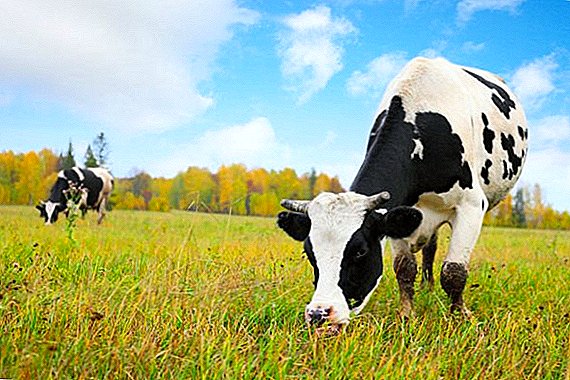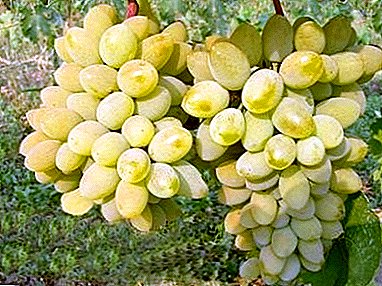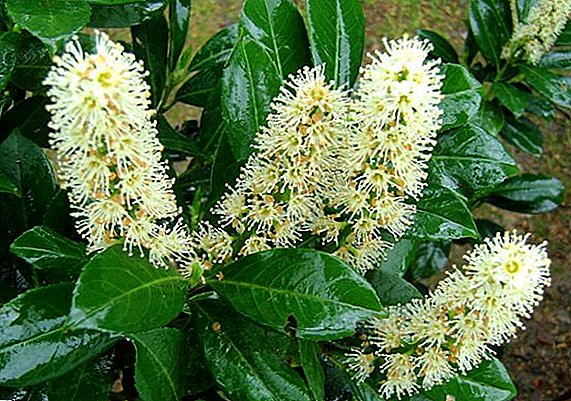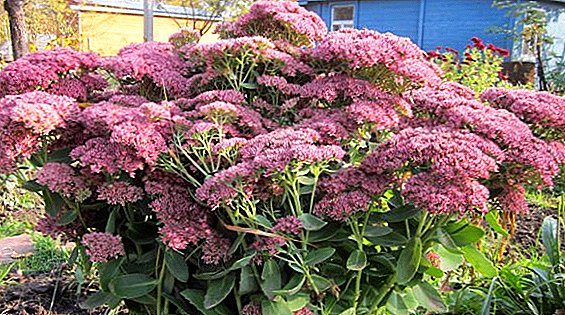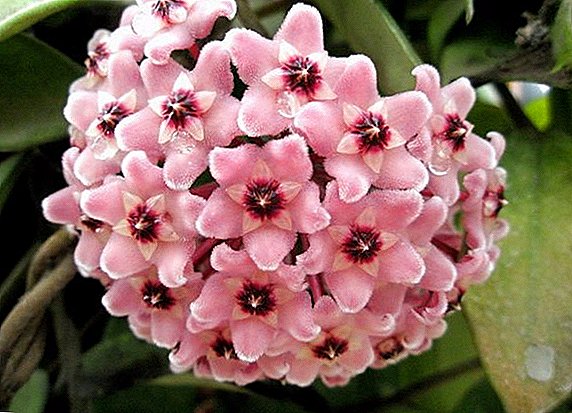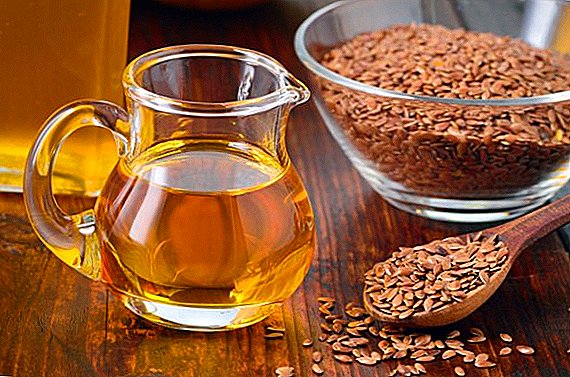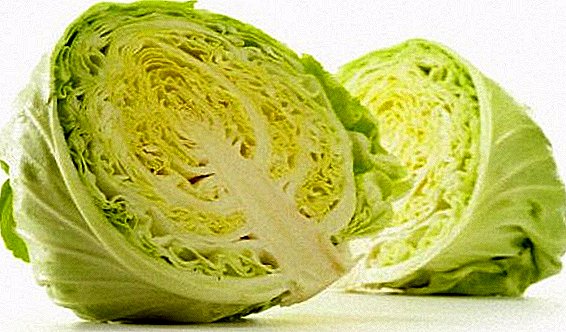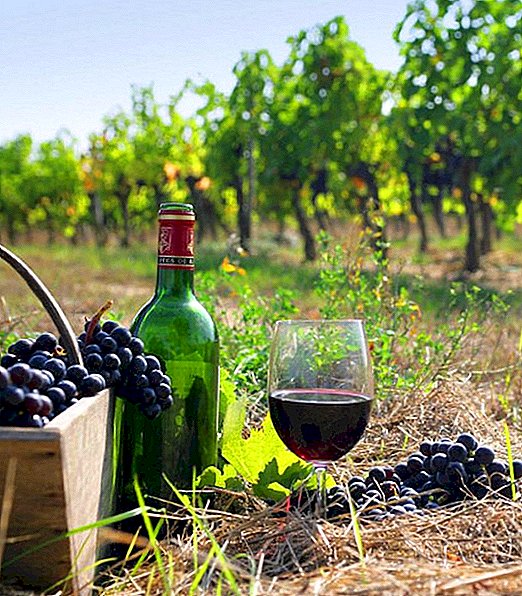 Cabernet wine is well known and loved by all connoisseurs of dry red wines. Almost all countries where there is own winemaking, from cold Canada to roast Lebanon, grow the same-name grape variety with not very large dark-blue berries of a round shape. Branded wines Cabernet produces Italy and Spain, Ukraine and Moldova, Chile and Argentina, as well as South Africa, Australia and the United States of America.
Cabernet wine is well known and loved by all connoisseurs of dry red wines. Almost all countries where there is own winemaking, from cold Canada to roast Lebanon, grow the same-name grape variety with not very large dark-blue berries of a round shape. Branded wines Cabernet produces Italy and Spain, Ukraine and Moldova, Chile and Argentina, as well as South Africa, Australia and the United States of America.
Inference history
"Cabernet Sauvignon", he is "Petite Vidure" - a grape variety with a three hundred year history, derived in the famous French Aquitaine, known for the production of Bordeaux wines (however, according to some sources, this grape exists in the territory of modern France since the times of Ancient Rome).
Today it is reliably known that the variety is the result of the crossing of two Bordeaux varieties - a white Sauvignon, which gave the frost resistance to a new variety, and a red cabernet franc, which gave the hybrid a bright aroma and unique structure.
Did you know? No reliable data on how the Cabernet Sauvignon was harvested has reached our days, and therefore the generally accepted version is that the crossing occurred by chance, although true winemakers say that there are accidents in this area. be can not.
The second half of the XVII century in France was very active in the field of winemaking. At this time, wine production was actively coming into vogue, and not only professionals of several generations, but also eccentric bourgeois and middle landowners were involved in it. 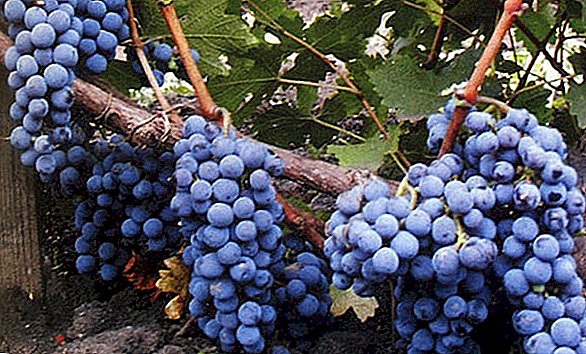
He did not bypass this specific type of agriculture and monasteries, where monks also actively conducted all sorts of breeding experiments and experiments. On the other hand, the Great French Revolution that erupted in this epoch could well absorb the painstaking records of amateur winemakers, which explains the lack of information about the process of grape-making cabernet.
Anyway, Cabernet Sauvignon very quickly made direct and successful competition to the more capricious Bordeaux grapes Merlot and Malbec. And the Cabernet grapes began their triumphal march around the world in the middle of the nineteenth century and since then has conquered a huge number of countries on almost all continents.
Description of biological features
Cabernet Sauvignon belongs to late grape varieties, its crop in our country is usually harvested not earlier than October. The vine takes root quite easily and ripens without any problems, the yield is quite high. The leaves are round with red toothed tips. Spreading of bushes is high, shoots are covered with thick fluff, in youth they have a very light, almost white shade.
Did you know? Other famous variety names "Petit Cabernet", "Lafitte" ("Carriage").
Cabernet Sauvignon forms long, up to 15 cm, loose clusters in the shape of a cone, sometimes with a side branch. Round berries - up to 1.5 cm in diameter and up to 3 g of weight. The color of the berries is dark blue, the skin is rough, covered with a waxy coating. Bones in the berries are present, but their number is small. Grapes juicy, pleasant to the taste.
The advantages and disadvantages of the variety
Cabernet Sauvignon grapes are so easy to grow and maintain that they are sometimes called lazy grapes. It is resistant to drought and almost does not rot when watering, is not afraid of either severe winter or spring frosts, has little susceptibility to the most dangerous diseases for grapes (in particular, phylloxera and mildew) and pests (grape leafworm), stably grows and perfectly adapts to changeable conditions.
Among the shortcomings of a variety, it is possible to distinguish perhaps a rather high shedding of berries and a lower yield than in other noble Bordeaux varieties. Another problem of this variety is the so-called pea, which is manifested in the appearance of small and very acidic green unformed berries on the grapes.
The remaining shortcomings of the variety, if they can be called such, are related to the taste qualities of berries as wine raw materials - too heavy, rich and tart taste, insufficient piquancy, but this deficiency is skillfully compensated by the addition of other grapes to the wine, in particular Merlot and “parental” "Cabernet Franc.
We also want to tell you about such a popular grape variety as "Isabella".
How to choose grapes when buying
The main condition for the purchase of high-quality seedlings - appeal to this place in a proven place. Unscrupulous dealers perfectly mastered the skill of deceiving inexperienced buyers, therefore, to give a fresh look to low-quality raw materials for them will have no difficulty.
And yet, some rules for choosing saplings of grapes need to know in order to protect yourself at least from obvious and obvious marriage.
- The roots of grape seedlings dry up very quickly, after which the plant can be very difficult to settle down.
- It is better to purchase seedlings immediately before planting, since they do not tolerate storage. If you are going to plant grapes in spring, you should not buy a seedling in the fall.
- A large number of leaves on autumn saplings is a reason to refuse to purchase: it is likely that a large amount of moisture has already passed through the leaves, and the sapling is dehydrated.
- Always purchase seedlings in season and with a large selection.
Ask the seller to carry out certain manipulations with the seedling to make sure that the vine is alive:
- if you cut off the top of a seedling or remove a small section of the skin, you should see the juicy and moist green flesh;
- the root of the fresh cut should be light and moist, like a cut raw potato tuber;
- when bent, the vine may crackle slightly, but not break;
- buds in a healthy seedling do not fall off from the slightest touch;
- the grafting site should be well accrete - twist the seedling at the junction of the graft with the stock on the principle of squeezing wet laundry and consider it carefully afterwards: you should not see any cracks or gaps;
- On the other hand, if you don’t see the vaccine at all, it means that it doesn’t exist, despite all the seller’s assurances that everything has grown together so that it is no longer noticeable: you are just trying to sell the unvaccinated sapling instead of the grafted one.
Important! If the seller refuses to unconditionally carry out any of the operations offered by you - say goodbye and go shopping elsewhere: they are deceiving you!
The high price is also not a guarantee of quality, as well as numerous certificates with seals. Trust your eyes and the reputation of the seller: if you have acquired a beautiful seedling, but it has not taken root, consider whether it is worthwhile to apply for the new raw material to the same merchant.
When and where is better to plant on the site
There are two ways of planting grapes - spring and autumn. Each has its own characteristics, its own advantages and disadvantages. So, spring planting is good because the vine will definitely take root well before the frost, but this method is associated with certain risks of storing seedlings until spring.
That is why many experts prefer to plant grapes almost in the winter, choosing an especially warm day for this, so as not to store the seedling for several months.
Learn about the rules of planting grapes in the fall.
If there is a choice, grapes are planted in the fall long before the first frosts (around mid-October), so that unbroken roots are not destroyed as a result of a sharp drop in temperature.
Planting and cultivation of grapes begins with the choice of location. The best place for Cabernet Sauvignon is the southern or southwestern slope of the site with good lighting and ventilation. The vineyard is placed from north to south. 
Important! A good place for grapes is at the southern wall of the building: in this case the vine will be protected by a safe shelter from the most severe northern winds. But in the shadow of trees or other buildings this plant should not be planted categorically!
The composition of the soil grapes Cabernet Sauvignon does not impose high requirements, but good drainage and general nutritional value of the soil is welcome.
How to plant: planting scheme seedlings on the site
How to grow cabernet grapes in the country - the answer to this question depends on what territory you have for this and how much wine you want to have. As was said, a small number of bushes can be planted in one row at a distance of at least one and a half meters from the nearest structure.
But if you plan to build a real vineyard, seedlings should be placed in rows, the distance between which should be at least three meters, so that all the clusters receive enough light. The distance between Cabernet Sauvignon grapes in a row should be about one and a half meters.
Did you know? In dry and sandy soil, the grapes are sown in a trench-like manner (in deep holes), but if there is close groundwater, as well as on loams and clay soils, on the contrary, the bed should be slightly raised.
When planting a seedling, a pipe with a wide diameter or an inverted plastic bottle with a cut-off bottom is buried in a hole to irrigate the vine through such a device.
However, taking into account the unpretentiousness of Cabernet Sauvignon, three years after the vine has taken root, such a pipe can be safely removed - the grapes are quite able to independently receive the moisture it needs from deep layers of soil, and no longer needs special privileges in irrigation.
See also the grapes most suitable for wine.
Rules of seasonal care for grapes "Cabernet Sauvignon"
As already mentioned, Cabernet grapes are easy to grow, because the variety is unpretentious for changeable weather and is not very afraid of pests. But this does not mean that leaving such a vine is not required at all.
Watering mode
Proper watering is very important in the technology of growing wine berries. Excess moisture, like its deficiency, has a bad effect on the harvest. As it was said, during the first three years of the life of the vine it is better to water it through a pipe dug in a hole or a plastic bottle, then these devices can be safely removed.
Tying the vine to the trellis after removing the winter shelter, it produces its first watering. At the beginning of the growing season, the grapes need especially a lot: one bush will take up to 40 liters of water. 
Important! Water for spring watering of grapes should be a little warm, in addition, for dressing it is good to add a little wood ash (about a half-liter jar per bush).
Later, before the ripening of the berries, two more waterings are carried out: the first - a few days before the beginning of flowering, and the second - after the flowering has ended. When the grapes begin to take shape berries, watering must stop regardless of the soil moisture, this rule applies to any grape varieties.
Finally, just before winter itself, a few days before dropping, the grapes are watered again (this is done so that the vine does not enter the winter with dry soil, this ground freezes more and the grapes may die from too severe frost).
Fully grown vineyards can be watered even less. Actually, throughout the entire season, the vine can extract from the soil a sufficient amount of moisture for normal development, but watering is obligatory before winter.
Fertilization
It is also necessary to feed the grapes with caution, because an excess of fertilizers slows the growth of the vine and reduces the yield. If, before planting the grapes, you have taken care of saturating the soil with organic and mineral fertilizers, this reserve is enough for the first three or four years not to add anything to the earth.
From organic grapes respond very well to manure, also suitable peat and compost. Mineral supplements - carbamide, ammonium nitrate, superphosphate, and potash fertilizers (potassium sulfate, potash salt, wood ash). You can also use complex mineral supplements, such as Florovit, Kemira and others. 
See also what types of mineral fertilizers are and what nutrients are present in them.
In the spring, simultaneously with the first watering, it is necessary to feed the grapes with mineral supplements containing nitrogen, phosphorus and potassium. Each bush will need 50 g of phosphate and 20 g of potash fertilizer. A shallow trench is dug around the bush, fertilizer is put into it, and sprinkled with earth on top.
The next fertilization can be carried out before flowering, this time using organic matter and some more potash and phosphate fertilizer (approximately 15 g and 25 g, respectively, based on a bucket of water).
Important! You can not feed the grapes with nitrogen fertilizers in the second half of the summer, this leads to a serious delay in ripening berries. The same result gives a surplus of fertilizers.
Feed the grapevine can also be sprayed, and this form of fertilizer is well combined with preventive treatment from pests. For this, it is most convenient to purchase a ready-made product in a specialized store ("Aquarine," Plantafol, "Novofert, etc.).
Literate pruning
Cabernet Sauvignon is especially in need of proper pruning, as overloaded vine produces a bad crop. Pruning can be done at any time of the year, but each pruning has its own characteristics.
Did you know? Autumn pruning is more preferable than spring, because during abundant sap flow, the pruned vine heals poorly and grows pasaka (“cries”). Such tears flood the buds, they turn sour and do not grow, so an illiterate spring pruning can destroy the grapes.
If it was not possible to prune in the fall, or the bush planted in the autumn throws out too many shoots, you can carefully remove them in early spring, when it is still not completely warm, but the real cold is over. At this time, dry and diseased branches of the vine are also removed.
In the summer of grapes pinch, remove excess branches and leaves. A properly formed shrub should be well lit by the sun from all sides in order for the berries to ripen better. In the fall, the grapes are cut during harvesting (weak shoots are removed and so-called "tops" - shoots without grapes). Then, after the leaves fall, a more cardinal pruning is performed.
Important! The correct time for autumn pruning is the beginning of the first frosts. Sap flow should stop in the vine, but you should not reach the real frosts, because the branches will become too fragile.
On a young seedling, as a result of pruning, 3-7 side shoots should be left, no more. On an adult vine in September, it is necessary to remove all side shoots that were fired lower than half a meter from the ground. Then, from shoots growing at a height higher than 0.8 m above the ground, the tops are cut to one tenth, and all side branches are removed.
Then, during the second autumn pruning at a height of about one meter from the ground, you need to choose a pair of the strongest shoots: cut the bottom one, leaving 3-4 buds, and cut the top one on the opposite side at about 10 buds - this is where the clusters will form.
Disease and Pest Resistance: Treatment and Protection
We mentioned above that Cabernet Sauvignon is very resistant to even the most terrible enemies of grapes. Nevertheless, in order not to have problems with diagnosis and treatment, it is necessary to carry out certain preventive measures to protect the vine from such misfortunes as the grape and spider mites, pruritus, leafworm, as well as various fungal diseases and decay.
In specialized stores, you can purchase universal preparations for the prophylactic treatment of grapes, which possess both fungicidal and insecticidal properties and, in addition, stimulate the growth of the vine. Since these drugs are usually toxic, treatment should be carried out in early spring. And if the vine is still affected, and the treatment is carried out later - in any case, it must be fully completed at least one month before harvest.
Did you know? As a safe alternative to pesticides, it is possible to fight ticks at an early stage of infection by spraying the leaves with ordinary soap and water.
But who is really dangerous for the Cabernet - it wasps. Carefully and regularly inspect the site for the presence of wasp nests on it. If these insects attack your crop, set up special traps or, if all else fails, cover the clusters with gauze.
Frost resistance: shelter for the winter
Cabernet Sauvignon belongs to frost-resistant varieties (the vine can withstand temperatures down to -30 ° C), but when growing grapes in the middle lane for the winter, it should be covered. На самом деле особенности повреждения виноградников в результате морозов - очень сложная наука, где важно не только то, насколько низко опускалась температура в течение зимы, но и то, насколько неожиданными и серьезными были осенние и весенние заморозки, какие ветры преобладали в течение холодного сезона и т. п.
Therefore, in order not to risk, you should not leave the vineyard on the trellis for the whole winter.
The easiest way to shelter a grape is to drop it. You can prepare for the vine and more time-consuming place for wintering - cover it with boards, plywood, film and other improvised materials, lined up a pillow from dry grass.
Important! Whichever way you choose, you can not cover the vine with dry grape foliage, because in this case you do the perfect wintering for pests with your own hands.
Covering the grapes with a film also proved to be not very good: if you do not have the opportunity to arrange regular airing for the vine, it can rot and rot.
Using Cabernet Sauvignon grapes for making wine
And now, finally, the most pleasant thing is harvesting and preparing wine.
Did you know? Cabernet Sauvignon is an exclusively wine grape variety, it is not very suitable for use as a delicacy because of its too coarse skin.
For which year Cabernet Sauvignon grapes fruit depends on a lot of factors, but on average it will take three to five years to wait from the moment of planting.
Cabernet wine is loved by many: it has a spicy and tart taste with a hint of currant. True, young cabernet resembles ink in color, and its taste is very heavy. The drink matures for a long time, but over time, it acquires a noble pomegranate hue and a very complex bouquet. 
The astringency (thanks to the hard skin and bones) and the aroma of black currant are the visiting card of the Cabernet Sauvignon.
As mentioned above, when preparing wine from Cabernet Sauvignon, other varieties of wine are usually added to the drink to harmonize the taste, but a quality drink from this grape is also produced.
Did you know? According to the existing rules for wine to be considered varietal (made from one grape variety), it is enough to have at least three-quarters of one type of grape (according to the Bodro scheme, completely pure single-sorts of wines already, as a rule, do not make ).
The indisputable advantage of this variety for beginner winemakers is its predictability: in whatever conditions the vine grows, whatever is added to the drink during preparation, the main note of Cabernet remains recognizable.
The recipe and technology of preparing high-quality wine at home is a topic for a separate article. The only advice that I would like to give to beginners: take care in advance about the purchase of real wine yeast, suitable for the production of red wines, because the wine on natural yeast has nothing to do with the noble drink that you can prepare with your own hands, carefully observing the technology.
Wine can be prepared not only from grapes, but also from jam and even compote.
Thus, having made the decision to grow Cabernet Sauvignon grapes on your plot, you will not indulge yourself in big troubles, but in October you will pick up a wonderful harvest of high-quality wine raw materials and enjoy yourself and delight your guests with an elegant and noble drink.


